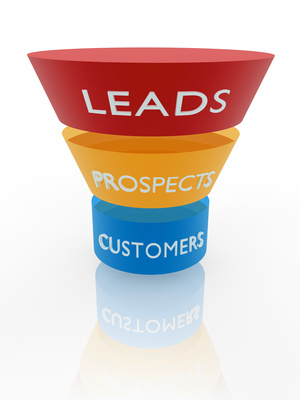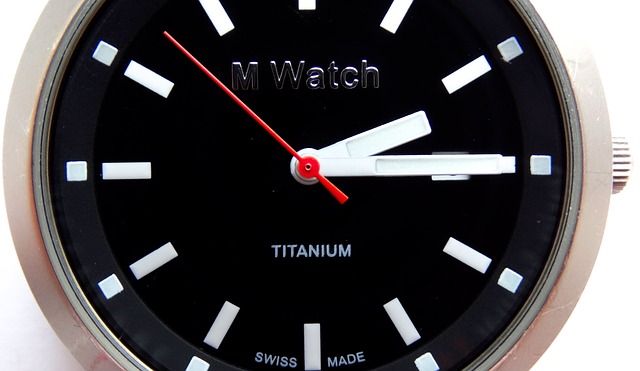Coders, get excited for one of the most important episodes I’ve ever recorded for The Coders’ Startup. Today, we’re talking all about automating your sales funnel. These tactics will be especially useful if, like me, you sell digital or information products. But even if you don’t, you can go ahead and apply these principles to your own business, whatever that might be.
We already know that building an email list is hugely important when it comes to running your business. That’s step one of the process. Step two, is turning your email into an automated sales funnel, so that you can start generating passive income and capitalizing on the products you’ve already worked hard to create.
By going through this process myself, my business is slated to generate between $5 – $6k per month. And the best part? Once I set up these different triggers inside my email funnel, I was able to step out of the picture and just let the sales roll in.
 Here’s how you can do it, too …
Here’s how you can do it, too …
Customer Value Optimization
The topic of this episode dates back to a single blog post I was introduced to back in July 2014. The piece was written by Ryan Deiss, who runs a great website called digitalmarketer.com. It’s all about traffic conversion and engagement. I highly recommend you sign up for his email list. You’ll learn a lot simply by analyzing that auto-responder series itself.
The blog post was on the subject of “Customer Value Optimization” i.e. getting the most out of every single customer who enters your sales funnel. Reading and studying this (very long) article was a game-changer for me, because it walks you through, in detail, how to set up a high-quality auto-responder series.
In the next sections, I’ll try to summarize the article and instruct you through the main takeaways of how to set up this highly-beneficial automation.
Offer a Lead Magnet
First thing’s first, you need to get people to give you their email address to be added to your list. How do you do that? By offering a lead magnet.
A lead magnet is basically a “bribe” to get someone to opt-in to your list, in exchange for something valuable. Think of this exchange as an actual transaction. Even though no real money is at play, this will help you to determine just how valuable your lead magnet should be.
For example, I offer a free email course that teaches programming as my lead magnet. This is a very valuable offer for someone wanting to learn to program. It’s an organized, structured course, and is valuable enough that I feel slightly uncomfortable giving away that much good information for free — that’s how you know you’re doing it right.
There are lots of other products you can give away as a lead magnet — free PDFs of the top tools or tricks in your industry are always a good option. But don’t be afraid to test multiple products to see what ultimately converts the best.
After you’ve delivered something valuable, your subscribers will start to trust you more and become fans of your work, which leads to the next sales pitch.
Pitch a Tripwire Product
Another sales tactic to embed in your funnel, is offering what’s called a tripwire, or welcome mat product. A trip wire product is what’s considered a low-cost, high-value item.
For example, I typically sell my eBook for $15, but when I  pitch it as part of my auto-responder series, I offer it for only $5. The purpose of this tactic is to make people, literally, trip over this special offer — almost like buying that product for such a low price would be a no-brainer.
pitch it as part of my auto-responder series, I offer it for only $5. The purpose of this tactic is to make people, literally, trip over this special offer — almost like buying that product for such a low price would be a no-brainer.
The goal here is not to make a lot of money in the sales of your tripwire product, but to get your buyers comfortable with opening their wallets.
A sale at this point in the funnel will separate your buyers from your non-buyers, which is very important. If a customer isn’t going to buy your tripwire product, they’re probably not going to buy anything later down the line that costs more, either.
A tripwire product gets buyers into your funnel, and gets them into the mindset that when they give you their money, they get valuable, quality products in return.
Up-sell After a Purchase
It doesn’t stop there.
After someone purchases your tripwire product, you have a great moment of opportunity to up-sell. For example, on the thank-you page after a trip-wire product purchase, you can offer your customer an up-sell to one of your core products i.e. usually something that costs at least $150 or more.
For me, this is my Java Video Tutorials course, which is currently selling at $150. However, I used to sell this product for $800.
Why do I bring this up? Because, you shouldn’t be afraid to charge what you’re worth! It’s also a good idea to test out different price points here, and find that conversion sweet-spot.
Another good measure to test is when in the sales funnel you should offer this core product. While I mention using it as an up-sell, there’s really no telling what might work best or make the most sense for your particular product and industry.
Add Scarcity
 If you’re looking for a strategy to double sales inside your email funnel — this is it, folks. Add scarcity to your product. While this strategy isn’t new, revolutionary, or groundbreaking — it simply works!
If you’re looking for a strategy to double sales inside your email funnel — this is it, folks. Add scarcity to your product. While this strategy isn’t new, revolutionary, or groundbreaking — it simply works!
So, what is scarcity? Essentially, it’s a timer that counts down the days, hours, and minutes left to purchase your product before “something happens”. That “something” can be a number of things — a price increase, for example.
Another method to play with here, is offering bonuses on top of your core product that disappear in a certain time frame. For example, maybe you offer a free eBook, or a free PDF, if your customer purchases your product within the next 24 hours. The idea here, is that you provide them an offer that is so valuable, they simply can’t refuse it. It forces them to make a decision.
A rule on scarcity: don’t lie about it. Using false scarcity will just get you caught up in a lie which will ultimately tarnish your product and relationship with your customers. Not good.
Play With Timing
Once you’ve created all of these auto-responder emails, the key is to effectively space them out so you don’t bombard your customer, but you manage to remain in their headspace.
Experiment with what works best in your email delivery, always alternating between value, sales pitches, scarcity, and up-sells. A key decision you’ll have to make, is how many emails to send out before you make your first pitch.
Currently, I send out four courses before I make any type of sales pitch. And on top of that, I add a lot of variety so that it doesn’t seem overly spammy. For example, email number eight in my funnel is all testimonials from satisfied customers. Soon after, I send out a virtual tour of my core product. That way, customers can see the nitty-gritty of the product before they buy it.
Know What Your Customers Are Worth
So, why is all this so important? If you know how much your customers are worth i.e. your conversion rates, you’ll then know how much you can afford to pay for lead generation.
If you don’t have a blog thats producing large amounts of traffic to your product, thats okay, because you can buy that traffic through advertising. Between Google, Facebook, and other social media ads, you have a lot of options on where and how to acquire new customers.
Here’s an example from my business. In this past month alone, I’ve converted 383 email addresses from Facebook into leads. On average, I’m paying $1.07 per email address. That means, it cost me $410 to acquire 383 email addresses into my sales funnel.
Here’s the fun part. I know that each email address I have on my list is worth $10 to my business. So by paying about $400 now to get those customers, I know I’ll really gain $4,000 in the long-term. And who doesn’t want that?
Links Mentioned:
http://www.digitalmarketer.com/customer-value-optimization/
Image Sources:
toproofmarketing.com
pixabay.com
2 thoughts on “EP19 – Automating Your Sales Funnel”
Comments are closed.